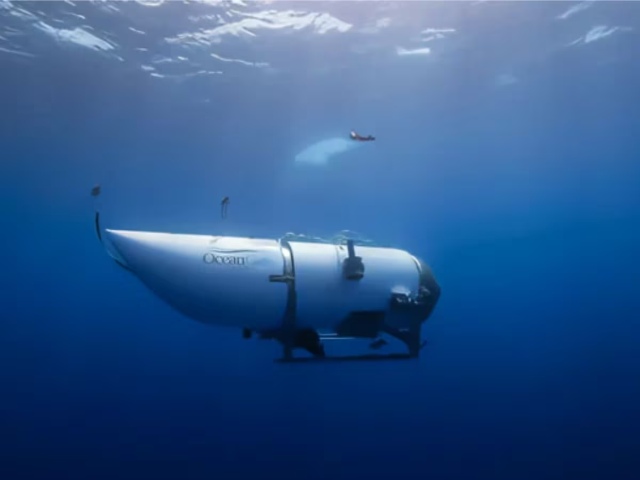
-
This Is What A Submarine Implosion Would Look Like [Video]
23 Jun 2023 by Tayla in Lifestyle, Tech/Sci, Video, World
[imagesource:instagram/dexerto]
It is pretty much confirmed that those five people who were inside the submarine exploring the Titanic wreckage are a permanent part of the Atlantic Ocean now.
US Coast Guard Rear Adm. John Mauger said at a press conference on Thursday that the Titan submersible suffered a “catastrophic implosion”, per ABC News, with debris from the OceanGate Titan sub located around 500 metres from the shipwreck.
The implosion was one of the main theories raised by the researchers during the search phase, and it seems that the sub ended up succumbing to the intense pressure of the seabed, causing the death of its five crew members.
It remains “too early to tell” when the implosion took place, but the search and rescue team will continue to collect information, Mauger added.
“This is an incredibly unforgiving environment on the seafloor,” Mauger said. “This is something that happened in a remote portion of the ocean.”
So what exactly is an implosion? Unlike an explosion, implosion occurs when the outside pressure is greater than the inside pressure, which creates a process where the object collapses on itself as if being crushed by an external force.
Despite experts claiming that the carbon-fibre ship was capable of reaching 4 000 metres (the Titanic sits 3 800 metres below sea level), the Titan never had any safety certification. At that depth, the pressure is so strong it reaches a level 380 times the atmospheric pressure on the Earth’s surface, which means it could compact a vehicle like a can of soda.
The implosion of a submersible delivers immense force, says oceanographer Bob Ballard:
“I don’t think people can appreciate the amazing energy involved in the destructive process of an implosion,” Ballard said. “It just takes out and literally shreds everything.”
“It’s extremely powerful,” he added.
A crack in the submarine’s hull would have been enough for the force to cause a violent implosion, disintegrating the pressure chamber where the five crew members were, per Stefan Williams, a professor of marine robotics at the University of Sydney.
Social Media is alight with footage of what an implosion looks like, which is one way to imagine these five people dying at the bottom of the ocean:
@ohmeeegeeee I couldnt imagine #submarine #titan #missing #implosion #implode #scary #ocean ♬ Creepy and simple horror background music(1070744) – howlingindicator @successclipss #titan #submarine #titanic #implosion #news #viral #missing #xyzbca #fypシ #simulation ♬ 28 Days Later Theme – Chris F @sincerelybootz For educational purposes: Submarine implosion depiction #titanic #titanicexpedition #ocean #submarine #implosion ♬ original sound – Bootz @titansub21 simulation of what Titan implosion could look like 😓💔 what do you think happened? #breakingnews #titansubmersible #titan #missingsubmarine #imploded ♬ original sound – Titan Submersible While we were counting down the hours until the oxygen inside the submarine ran out, Guillermo Söhnlein, co-founder of OceanGate, stated that the ship probably imploded way before then:
“When operating at depth, the pressure is so great on any submarine that if it fails, it would be an instant implosion. If that happened, it would have happened four days ago,” he said in an interview with BBC.
Details about the people inside the Titan’s final minutes are a mystery, but we can safely assume that they died instantly.
[source:abcnews]
Latest News
-
Thai Woman Sentenced To Death For Murdering 14 Friends With Cyanide In Shocking Killing Spree
[imagesource: Sararat Rangsiwuthaporn] A woman in Thailand, dubbed 'Am Cyanide' by Thai...
-
René Magritte Painting Sells For Record R2.1 Billion At Auction
[imagesource:renemagritte.org] A René Magritte painting portraying an eerily lighted s...
-
Brave Rape Survivor Alison Botha Faces New Challenge After Brain Surgery
[imagesource: Alison Botha] Gqeberha rape survivor Alison Botha, a beacon of resilience...
-
Get Ready For The Mother of All Celebrations As MCQP Turns 30
[imagesource:mcqp/facebook] Clutch your pearls for South Africa’s favourite LGBTQIA+ ce...
-
The Iconic Good Hope Centre Is Set For Redevelopment
[imagesource:capetown.gov] The City of Cape Town’s Mayoral Committee has approved the...
-






























